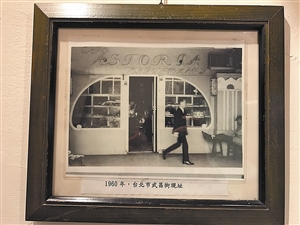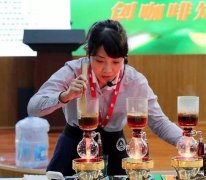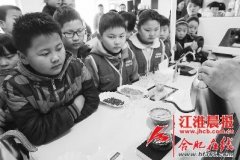How much do Taiwanese love coffee? The average person drinks a hundred cups a year.

Cama coffee shops can be seen everywhere on the streets of Taipei.

"Milk Glider" (milk glider) "post-90s" Lin Zixuan won the top spot in the Northern District in the 2015 "TNTTW International pull Flower Competition Taiwan trials".

In 1960, the Star Cafe on Wuchang Street in Taipei.
Whether it's staying up late to work overtime, getting up early to go to work, or best friends' afternoon tea or business talks, Taiwanese like to drink coffee. How much do Taiwanese love coffee? It is said that the coffee cups drunk by Taiwanese in a year are equivalent to about 210000 buildings. Based on the amount of coffee imported into Taiwan, the industry estimated that the average consumption of coffee per person in Taiwan exceeded 100 cups in 2016.
In addition, Taiwanese are also famous for drinking coffee. Taipei was voted one of the top 10 best coffee-tasting cities in the world by USA Today, and the number of cafes on the streets is on a par with the number of convenience stores. Even laundries, grocery stores and florists can drink a cup of mellow coffee.
According to data from Taiwan's financial authorities, Taiwan imported 23800 tons of coffee in 2014, and statistics from the "Customs Administration" of the Taiwan authorities also showed that from January to August 2016 alone, Taiwan imported 20, 000 tons of coffee.
Coffee cultivation in China began in Taiwan
Taiwanese wake up with coffee to refresh themselves in the morning, drink coffee after lunch to help digestion, talk about things, drink coffee to create an atmosphere, and have a cup of coffee to kill time. Compared with traditional Chinese tea drinking culture, coffee is obviously "imported", so how did Taiwan's coffee culture develop?
"Coffee cultivation in China began in Taipei in 1884 and was introduced to Hainan Island, southern Guangxi and other places after 1908." According to the Annals of Yunnan Province, Volume 39, Records of Land Reclamation, coffee was planted in Taiwan earlier than in the mainland. According to historical records, although the Qing government intended to help Taiwan's ethnic minorities grow coffee, it was the British who first took action to introduce coffee to Taiwan. However, the British dipped into it, but it did not achieve Taiwan's coffee industry. During the colonial rule of Taiwan, Japan regarded Taiwan as an important producer of coffee beans for the local market. The scale of coffee cultivation in Taiwan is increasing rapidly.
"the global coffee fashion can be divided into three major trends after World War II." Han Huaizong, author of "long live Coffee in Taiwan" and "Coffee Studies (Series)," told reporters that the first wave of development before and after World War II (1940-1960) was popular to drink canned coffee and instant coffee. The second wave of coffee is the rise of boutique coffee, which became more obvious after 1970, with an emphasis on fresh and re-roasting, as well as lattes and cappuccinos. The third wave is for American baristas to go against Starbucks, using top coffee beans, shallow roasting, no sugar, no milk, and paying attention to cup testing, so as to separate them from Starbucks.
Corresponding to the three major trends of global coffee, the context of the development of coffee in Taiwan can also be roughly divided into three stages. Wu Yiling, director of the Taiwan Coffee Association, told reporters that about 30 or 40 years ago, canned coffee appeared in Taiwan, such as Brown Coffee. When Starbucks entered the Taiwan market in 1998, coffee chains sprang up in Taiwan. Around 2005, convenience stores in Taiwan began to offer coffee for sale, and their own bakeries gradually increased, and hand-made coffee began to enter the lives of ordinary people in Taiwan. "Coffee is an indicator of life." Wu Yi-ling believes that the development of coffee in Taiwan is not only influenced by Japan, but also developed with the take-off of its own economy.
In the 1950s and 1960s, cafes played an important role in Taiwan's literary world.
In recent years, the trend of drinking coffee in Taiwan has become more and more prosperous, and the development of coffee shops has integrated the transformation of culture and lifestyle.
In the early days, cafes played an important role in Taiwan's literary, painting and art circles. According to records, there were only a handful of cafes in Taiwan in the 1930 and 1940s, but several well-known cafes, such as Polly Road, Shanshui Pavilion, and Tianma teahouse, were indeed an important stage in the painting, literary and theatrical circles at that time.
In the fifties and sixties, the Star Cafe began a period of coffee and book-scented years. It is reported that the Star Cafe moved from 7 Xiafei Road in Shanghai to 7 Wuchang Street in Taipei in 1949. Later, because of the karma of the poet Zhou Mengdee setting up a bookstall under the arcade, it became an important landmark of modern Taiwan literature and gave birth to many literary giants. Bai Xianyong, Wang Wenxing and others who founded Modern Literature used to gather here, and Huang Chunming and Chen Yingzhen often haunted the Star Cafe. Bai Xianyong once said, "the modern poems and novels of the 1960s in Taiwan (last century) are full of the fragrance of star cafes, and just like that, they sprout and blossom quietly."
Subsequently, in the 1960s and 1970s, professional European-style cafes began to emerge in Taiwan, such as Shangdao Coffee, Old Tree Coffee, Bee Coffee and so on. At that time, Old Tree Coffee was decorated with classical wooden tables and chairs in Louis XVI style, wooden ornaments, elegant chandeliers, and boasted siphon brewing coffee. When these European-style cafes first sprang up, they became a fashionable choice for middle-class dates and parties.
Along the way from literati cafes and professional cafes, Taiwan's coffee culture, after decades of development, has transformed from a minority elite culture to a common culture of the general public, and new features have emerged in the process of development. "in Taiwan, every coffee shop is an independent soul." Some operators say that the higher the density of cafes, the more prosperous the coffee culture will be.
Walking in the streets of Taiwan, apart from convenience stores, there must be the largest number of coffee shops. When a reporter asked Lin Che-hao, director of the Taiwan Coffee Research Office project, "how many coffee shops are there in Taiwan," he said that this figure is difficult to count, because apart from traditional coffee shops, there are now many bookstores, clothing stores, florists, grocery stores, and even laundries selling coffee. However, Lin Zhe-hao gave the reporter a brief classification.
Lin Zhe-hao says that coffee shops in Taiwan can be roughly divided into four categories: one is chain coffee shops, such as Starbucks; the second is convenience stores (such as 7-11); the third is self-roasting coffee shops; and the fourth is other mixed coffee shops, such as the laundry coffee shop mentioned above. "Coffee has an urban personality." Lin added that there are about 3000 bakeries in Taiwan, more than half of which are in Taipei.
On the question of how much Taiwanese like to drink coffee, Lin does not object to the speculation that "the average person drinks more than 100 cups of coffee per year," but he believes that it would be more accurate to estimate using the concept of consuming coffee beans, because the number of beans used in each cup of coffee is different. Specifically, Lin Zhe-hao agrees that Taiwan's consumption of 1.3 kilograms of coffee beans per person per year is a more comprehensive reflection of Taiwan's love for coffee. "if you translate it into cups, it should be one hundred to two hundred cups." Lin Zhe-hao said.
Taiwan coffee players are famous all over the world.
Taiwanese people not only drink more and more coffee, but also drink more and more coffee. In Taiwan, people can not only buy a 25-yuan (NT $) cup of American coffee at a convenience store, but also taste less than 200 yuan (about 40 yuan) lattes made by the world champion.
According to Taiwan media reports, since 2013, when Chen Zhihuang beat the Norwegian coffee talent to become the first non-Nordic coffee roasting champion, Taiwan's coffee talents have sprung up in a large number of world competitions in roasting beans, cup testing, flower drawing and other coffee fields.
In the alley of Minquan East Road in Taipei City, there is a coffee shop called "Milk Glider" (milk glider), which is one of the few stores in Taiwan run by "pull flower champions." The coffee shop is co-founded by four young people. Among them, Xie Weisheng and Lin Huan won the champion and third place medal at the 2015 Coffee Fest World Championship in Tokyo. Lin Zixuan, the youngest "post-90s", won the top spot in the Northern District in the 2015 TNTTW International pull Flower Competition Taiwan trials. In addition, Yang Qixing, a startup employee in the store, will take part in the World pull Flower Competition to be held in Tokyo in April.
When the mellow coffee meets the thick milk, coupled with the first-class barista, you can achieve a cup of delicate flower pattern. By pulling flowers out of the world, the friends of the Milk Glider hope that "coffee and milk can also become dreams."
"people are keen on competition, in addition to want to affirm themselves, the most direct is to learn skills they do not understand, and share their own unique kung fu." Zheng Zhiyuan, the Taiwan area final champion of the 2017 World Cup pull Flower Competition, told reporters that in recent years, young people in Taiwan are keen to participate in all kinds of coffee competitions and hope to constantly improve their skills in the events. Lim Dong-Won, champion of Taiwan's first Coffee Masters, observes that although there are large chain stores such as Starbucks in Taiwan, there are more small shops that import, bake, brew, and open stores. They are no less creative and professional. "Taiwan doesn't like large-scale coffee shops."
"the competition also has something to do with the economy." Wu Yiling believes that coffee-related competitions can promote the economy of the industry. "what you eat is good, and what you cook will get better and better." Wu Yiling launched and established the Taiwan Coffee Association in 2003. At present, it has more than 80 group members and more than 50 individual members, and holds six competitions all the year round, such as "World Cup Coffee Masters Taiwan selection Competition", "World Cup Surveyor contest Taiwan selection Competition", "WCE World Cup Bean Baking Competition Taiwan selection Competition" and "WCE World Cup pull Flower Competition Taiwan trial". She believes that the competition will enable Taiwan's young baristas to have access to the latest information in the world and have the opportunity to learn from other outstanding players.
Important Notice :
前街咖啡 FrontStreet Coffee has moved to new addredd:
FrontStreet Coffee Address: 315,Donghua East Road,GuangZhou
Tel:020 38364473
- Prev

Pu'er Coffee sings "the Story of time"
I'm not exaggerating this coffee. It's the best coffee I've ever had in every country all over the world. At the Foreign Ministry's Yunnan global promotion meeting last month, this good drink approved by Foreign Minister Wang Yi is Yunnan coffee. This commendation makes the coffee people in Pu'er City, which ranks first in the province in terms of coffee planting area, output and output value, full of joy. They drummed and shouted for Pu'er coffee.
- Next

Wow, green coffee beans.
The young reporter watched the coffee brewing process. Morning News on March 26, Jianghuai Little reporter Magic Coffee Tour was successfully held in Blue Orange Coffee. With curiosity, 20 young journalists, together with their parents, witnessed the birth of coffee from raw beans to cooked beans, and then to a beautiful cup of caffeine when added with milk. Raw bean: I heard the legend of the shepherd for the first time, Ka
Related
- Why are the coffee in some coffee shops not enough after being frozen? What should I make up for my American latte cappuccino coffee after being frozen?
- How much water does it take to steam coffee by hand? Why is the coffee brewing and steaming time 30 seconds? What is the purpose of steaming coffee?
- The suspected drink contains too much caffeine! Overlord Tea Lady responds urgently!
- Starbucks rejects antique paper coupons?! Netizen: Missed marketing opportunities!
- What ratio of water temperature and ground does the smart cup method use to press coffee? The difference between brewed coffee and filtered coffee?
- What is the standard process for the purpose of coffee cup testing? What is the difference between hand-brewed coffee and cup testing?
- How to use hand-brewed coffee paragon small golden balls? How does cold coffee lock in the aroma of coffee?
- Is American coffee black? What is the difference between American coffee and drip coffee?
- Unexpected! Well-known tea beverage brand Lele Tea will withdraw from the Zhengzhou market!
- Starbucks enters the fashion and beauty industry?! Netizen: Give me an ice American eye cream

